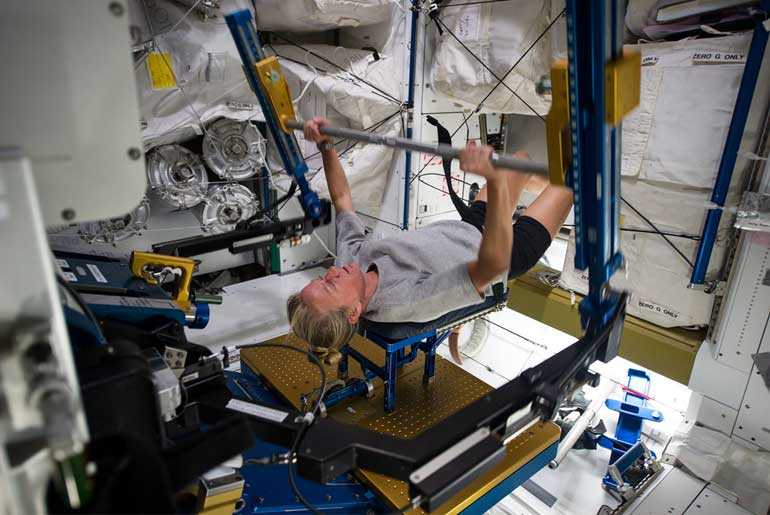New research conducted by scientists at UT Southwestern Medical Center in Dallas suggests that extensive exercise routines are effective in keeping astronauts healthy and protecting their hearts during extended space missions, which can last up to six months. The study found that astronauts did not experience a loss of heart mass or output, nor a decline in the function of the heart’s ventricles, even after spending an extended period in space.
This discovery has potential implications for treating diseases influenced by gravity and could be valuable for planning longer missions, such as those to Mars. One well-known effect of space travel is that astronauts typically experience a significant drop in blood pressure when they return to Earth. This drop is due in part to the remodeling of the heart caused by the microgravity conditions in space.
“Our study shows that, remarkably, what we are doing in space to preserve heart function and morphology is pretty effective,” stated senior study author Dr. Benjamin Levine. He is a professor of internal medicine in the division of cardiology at UT Southwestern.
In space, astronauts’ bodies do not have to combat the effects of gravity, meaning that their bodies work less strenuously. This situation is akin to what a person might experience during an extended period of bed rest.
The study found that the heart muscle mass of astronauts decreases by an average of 1% per week in space, and the volume of blood the heart can hold also decreases. The researchers were interested in whether the two hours of daily exercise that astronauts perform on the International Space Station (ISS), which includes both strength training and aerobic activity, could counteract these effects.
To investigate this, the researchers analyzed data from 13 astronauts who had missions on the ISS between 2009 and 2013, with missions averaging 155 days in duration. They collected data on blood pressure, the amount of blood pumped per heartbeat, and blood flow per minute before, during, and after each astronaut’s mission. Cardiac MRI scans were used to assess heart anatomy before spaceflight and shortly after return to Earth, with additional scans three weeks later.
The study found that astronauts experienced a significant decrease in blood pressure during spaceflight compared to their measurements on Earth, with their hearts performing approximately 12% less work. However, there was no decrease in muscle mass in both the left and right ventricles of the heart, and the amount of blood pumped by the heart remained consistent.
“There’s nothing magical about space and microgravity. The heart is quite plastic and responds to changes in physical activity,” Levine stated in a medical center news release. “It’s reassuring that the training astronauts are doing in space can protect their hearts from the risks inherent to spaceflight, even on extended missions.”
This research suggests that the rigorous exercise routines practiced by astronauts on the ISS can help mitigate the detrimental effects of extended periods of microgravity on the heart, offering insights into potential countermeasures for maintaining cardiovascular health during space missions.
Disclaimer:
The information contained in this article is for educational and informational purposes only and is not intended as a health advice. We would ask you to consult a qualified professional or medical expert to gain additional knowledge before you choose to consume any product or perform any exercise.








